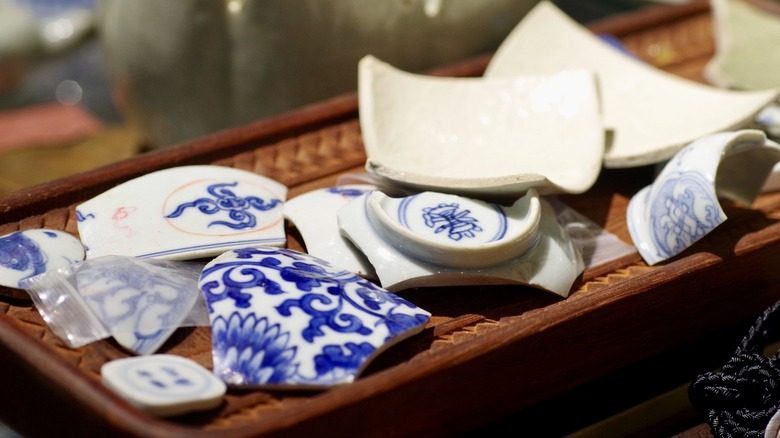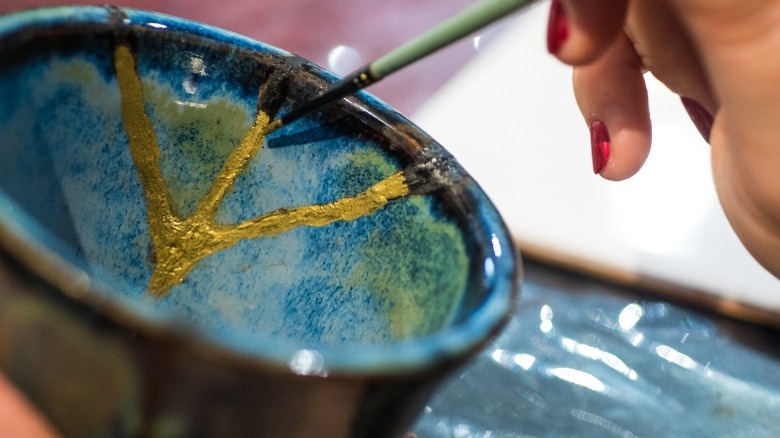Can You Really Fix Cracked China With Milk?
Milk is great for baking bread, drizzling over non-sugary breakfast cereals, and dipping your graham crackers, but somehow, the idea that milk can magically repair cracked dishware has spread across the internet. Just because a life hack goes viral on TikTok doesn't mean it works. But is the claim completely baseless?
Netizens suggest the cracks in your china will disappear if you tape it and let it sit in boiled (then cooled) milk for a couple of days. That's because milk contains an ingredient called casein, a binding protein. Introducing an acid and following that with heat draws casein out of milk, creating a sticky, plastic-like texture. It's theoretically possible to produce a strong enough casein substance to cover a minor scratch on your dishware, but it's not going to work for a shattered plate.
The casein isn't strong enough to withstand repeated use or washing, anyway. Plus, it's a biological product that can harbor unwanted bacteria. While the milk hack is a fun science experiment, it's not going to put Humpty Dumpty back together again (at least not without a bunch of outside help). Don't despair: there are alternative solutions for keeping your favorite busted bowls.
How to save your broken dishware
China is made of ceramic or porcelain with a waterproof glaze. It's usually only called china when it's high-quality and expensive, but any item that starts life as clay or kaolin (a type of white clay) is repairable in a similar manner. They begin as malleable clay, water, and minerals (usually feldspar or quartz) and are then transformed into long-lasting surfaces you can eat on (or use for decoration).
Milk can't bind those cracked pieces back together effectively, but glue and epoxy resin can. You can find online tutorials. But it's not a quick process, particularly if you need to be able to eat off it or you want to avoid one of the common dishwasher mistakes everyone makes (namely, putting in dishes that aren't dishwasher-grade). But if it's really important to you, it might be worth learning the repair technique or taking it to a pottery expert. And that's not the only way.
In Japan, there's the concept of wabi-sabi, the art of finding beauty and value in worn items. Professional artisans use gold lacquer to repair broken china in an art form called kintsugi. It's not about accepting flaws. It's about celebrating them. Even Michelin-star Japanese steakhouses use this idea in their dining rooms. Sustainability is always in style.

